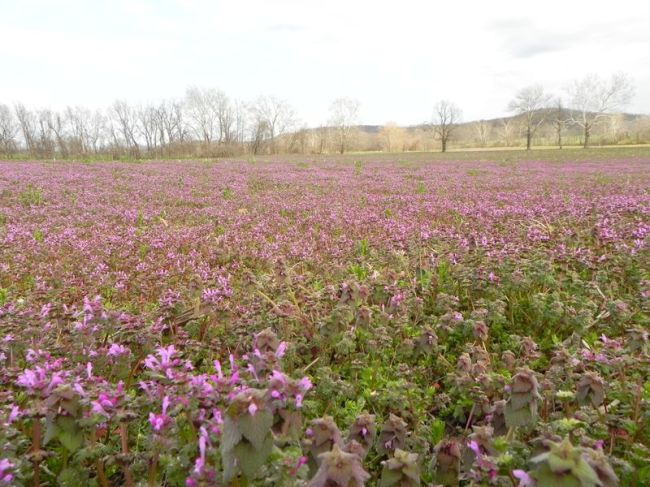
Lamium purpureum. Ted Wight. http://www.tedwight.com.
Those of you in the Eastern United States might be wondering why I’m showing a picture of this vile weed. Well to me, this plant is the harbinger of spring of weeds. I’ve picked more of these out of various gardens than there are Jasmines in all of Asia, but I hold a dear place in my heart for it nonetheless. It was one of the first plants I noticed as a child, and have many memories of their pungent, earthy scent. Purple deadnettle, and the similar henbit (Lamium amplexicaule) have the tenacity of turning an unplowed farm field purple during their small window of early spring bloom in March, and are a beautiful sight of the Kentucky countryside this time of year!
Lamiums are small mint relatives that are called deadnettles, but are not related to the stinging nettle. There are several species, originating in the Mediterranean region, and are often invasive weeds everywhere else. Little known is that the henbit and purple deadnettle are edible- reported to taste like spinach (I haven’t tried it to know.) The scent is very earthy and herb-like, almost like a slightly minty patchouli. To me it is THE early spring smell, although others will find it disagreeable.
There are a great many Brassicaceous plants that are lightly fragrant this time of year that bloom here as weeds as well- including the Garlic Mustard and Wild Mustards (Brassica sp.) and various cresses that dot the ground (Thelspi sp.) The Mustards are sweetly fragrant like fragrant Alyssum (Alyssum maritimum), but not as sweet. The cresses also contain a light pollen fragrance, much like baby’s breath. Other weeds of the Brassica tribe fragrant right now include Arabis alpina, native to rocky crags of the Atlantic areas in the Northern Hemisphere, with an almond-like scent.

Petasites fragrans. http://www.guernsey.net.
Many of the weeds and non-weeds with fragrant flowers this year tend to have either an almond-like scent or a heliotrope-like scent. This is hinted at by Wilder in The Fragrant Path, but I tend to notice more almond or alyssum than heliotrope. Alas, our readers from the UK will notice Petasites fragrans blooming its heart out in byways and crags around the isles. It has violet-shaped leaves, rather unimpressive pinkish flowers, but a striking heliotrope fragrance nonetheless.
Weeds are often a gardeners worst nightmare, but sometimes they can be the nose’s best friend. Over the season I’ll certainly detail some weeds as they come into bloom. Next will be violets here, followed by the various honeysuckles and clovers of May, day lilies of June, ragweeds of August, and lastly goldenrods and Chrysanthemums in Autumn. Today I saw two more plants in bloom to cover, and the next couple of days will surely shirk more plants to bloom as we’re getting a winter reprieve, thus time is truly of the essence these fragile March days!
